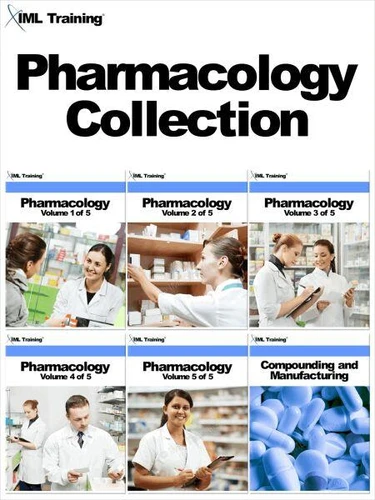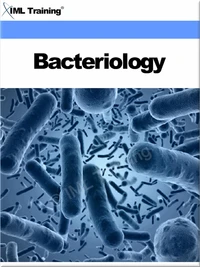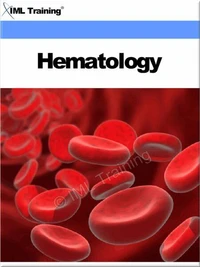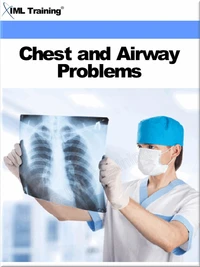Pharmacology Collection. Pharmacology
Par :Formats :
Disponible dans votre compte client Decitre ou Furet du Nord dès validation de votre commande. Le format ePub protégé est :
- Compatible avec une lecture sur My Vivlio (smartphone, tablette, ordinateur)
- Compatible avec une lecture sur liseuses Vivlio
- Pour les liseuses autres que Vivlio, vous devez utiliser le logiciel Adobe Digital Edition. Non compatible avec la lecture sur les liseuses Kindle, Remarkable et Sony
- Non compatible avec un achat hors France métropolitaine
 , qui est-ce ?
, qui est-ce ?Notre partenaire de plateforme de lecture numérique où vous retrouverez l'ensemble de vos ebooks gratuitement
Pour en savoir plus sur nos ebooks, consultez notre aide en ligne ici
- FormatePub
- ISBN978-1-78258-260-1
- EAN9781782582601
- Date de parution28/03/2013
- Protection num.Adobe DRM
- Infos supplémentairesepub
- ÉditeurTSD Training
Résumé
Pharmacology CollectionThis collection includes 6 of our training courses all within one book. You can easily use the bookmarks to navigate between each training course. This collection includes:- Pharmacology Volume 1 of 5- Pharmacology Volume 2 of 5- Pharmacology Volume 3 of 5- Pharmacology Volume 4 of 5- Pharmacology Volume 5 of 5- Compounding and ManufacturingFull illustrations and diagrams included.
Pharmacology Volume 1 of 5A patient who visits a physician or physician extender frequently receives a prescription for a medication. That prescription is brought to the pharmacy to be filled. The patient expects professional attention at the pharmacy. Part of that expectation involves any caution or warning the patient should heed while taking the medication. In your role you will serve as a source of drug information.
Patients and friends will ask you specific questions concerning the use of prescription and over-the-counter medications. You must know the trade and generic names of literally hundreds of medications. Furthermore, you must know the cautions and warnings associated with many agents. This course will present instruction in anatomy, physiology, and pharmacology. Pharmacology Volume 2 of 5Volume 2, is intended to give you a review of certain essential anatomical and physiological concepts important to pharmacology and to introduce six categories of drugs.
The review of anatomy and physiology should help you gain a better understanding of how the drugs work in the body and how they produce the side effects that are commonly associated with their use. Pharmacology Volume 3 of 5Drugs that act upon the respiratory system, cardiovascular system, or urinary system are frequently dispensed in pharmacies. This is because conditions that affect these systems (that is, hypertension affecting the cardiovascular system) affect many people.
Consequently, it is imperative that you have an understanding of these systems and the drugs that act on them. Pharmacology Volume 4 of 5Pharmacology Volume 4, other systems of the body (for example, the digestive system) and the drugs used to treat conditions of those systems will be discussed. As in the other pharmacology courses, you will be provided background material in anatomy, physiology, and pathology in order to help you learn about the specific drugs discussed in the course.
Pharmacology Volume 5 of 5Pharmacology 5, we shall view a drug in its treatment of specific ailments. Included is a section on biologicals and vitamins and minerals primarily because natural resistance and vitamins and minerals can prevent as well as successfully treat disease, malnutrition, and vitamin deficiencies. Compounding and ManufacturingIn this course, you will learn about/review the basics of the art and practice of pharmacy - compounding manufacturing.
Despite the fact that less compounding and manufacturing is being performed in today's pharmacy, you should still be familiar with the various the various dosage forms being used and how they are prepared.
Pharmacology Volume 1 of 5A patient who visits a physician or physician extender frequently receives a prescription for a medication. That prescription is brought to the pharmacy to be filled. The patient expects professional attention at the pharmacy. Part of that expectation involves any caution or warning the patient should heed while taking the medication. In your role you will serve as a source of drug information.
Patients and friends will ask you specific questions concerning the use of prescription and over-the-counter medications. You must know the trade and generic names of literally hundreds of medications. Furthermore, you must know the cautions and warnings associated with many agents. This course will present instruction in anatomy, physiology, and pharmacology. Pharmacology Volume 2 of 5Volume 2, is intended to give you a review of certain essential anatomical and physiological concepts important to pharmacology and to introduce six categories of drugs.
The review of anatomy and physiology should help you gain a better understanding of how the drugs work in the body and how they produce the side effects that are commonly associated with their use. Pharmacology Volume 3 of 5Drugs that act upon the respiratory system, cardiovascular system, or urinary system are frequently dispensed in pharmacies. This is because conditions that affect these systems (that is, hypertension affecting the cardiovascular system) affect many people.
Consequently, it is imperative that you have an understanding of these systems and the drugs that act on them. Pharmacology Volume 4 of 5Pharmacology Volume 4, other systems of the body (for example, the digestive system) and the drugs used to treat conditions of those systems will be discussed. As in the other pharmacology courses, you will be provided background material in anatomy, physiology, and pathology in order to help you learn about the specific drugs discussed in the course.
Pharmacology Volume 5 of 5Pharmacology 5, we shall view a drug in its treatment of specific ailments. Included is a section on biologicals and vitamins and minerals primarily because natural resistance and vitamins and minerals can prevent as well as successfully treat disease, malnutrition, and vitamin deficiencies. Compounding and ManufacturingIn this course, you will learn about/review the basics of the art and practice of pharmacy - compounding manufacturing.
Despite the fact that less compounding and manufacturing is being performed in today's pharmacy, you should still be familiar with the various the various dosage forms being used and how they are prepared.
Pharmacology CollectionThis collection includes 6 of our training courses all within one book. You can easily use the bookmarks to navigate between each training course. This collection includes:- Pharmacology Volume 1 of 5- Pharmacology Volume 2 of 5- Pharmacology Volume 3 of 5- Pharmacology Volume 4 of 5- Pharmacology Volume 5 of 5- Compounding and ManufacturingFull illustrations and diagrams included.
Pharmacology Volume 1 of 5A patient who visits a physician or physician extender frequently receives a prescription for a medication. That prescription is brought to the pharmacy to be filled. The patient expects professional attention at the pharmacy. Part of that expectation involves any caution or warning the patient should heed while taking the medication. In your role you will serve as a source of drug information.
Patients and friends will ask you specific questions concerning the use of prescription and over-the-counter medications. You must know the trade and generic names of literally hundreds of medications. Furthermore, you must know the cautions and warnings associated with many agents. This course will present instruction in anatomy, physiology, and pharmacology. Pharmacology Volume 2 of 5Volume 2, is intended to give you a review of certain essential anatomical and physiological concepts important to pharmacology and to introduce six categories of drugs.
The review of anatomy and physiology should help you gain a better understanding of how the drugs work in the body and how they produce the side effects that are commonly associated with their use. Pharmacology Volume 3 of 5Drugs that act upon the respiratory system, cardiovascular system, or urinary system are frequently dispensed in pharmacies. This is because conditions that affect these systems (that is, hypertension affecting the cardiovascular system) affect many people.
Consequently, it is imperative that you have an understanding of these systems and the drugs that act on them. Pharmacology Volume 4 of 5Pharmacology Volume 4, other systems of the body (for example, the digestive system) and the drugs used to treat conditions of those systems will be discussed. As in the other pharmacology courses, you will be provided background material in anatomy, physiology, and pathology in order to help you learn about the specific drugs discussed in the course.
Pharmacology Volume 5 of 5Pharmacology 5, we shall view a drug in its treatment of specific ailments. Included is a section on biologicals and vitamins and minerals primarily because natural resistance and vitamins and minerals can prevent as well as successfully treat disease, malnutrition, and vitamin deficiencies. Compounding and ManufacturingIn this course, you will learn about/review the basics of the art and practice of pharmacy - compounding manufacturing.
Despite the fact that less compounding and manufacturing is being performed in today's pharmacy, you should still be familiar with the various the various dosage forms being used and how they are prepared.
Pharmacology Volume 1 of 5A patient who visits a physician or physician extender frequently receives a prescription for a medication. That prescription is brought to the pharmacy to be filled. The patient expects professional attention at the pharmacy. Part of that expectation involves any caution or warning the patient should heed while taking the medication. In your role you will serve as a source of drug information.
Patients and friends will ask you specific questions concerning the use of prescription and over-the-counter medications. You must know the trade and generic names of literally hundreds of medications. Furthermore, you must know the cautions and warnings associated with many agents. This course will present instruction in anatomy, physiology, and pharmacology. Pharmacology Volume 2 of 5Volume 2, is intended to give you a review of certain essential anatomical and physiological concepts important to pharmacology and to introduce six categories of drugs.
The review of anatomy and physiology should help you gain a better understanding of how the drugs work in the body and how they produce the side effects that are commonly associated with their use. Pharmacology Volume 3 of 5Drugs that act upon the respiratory system, cardiovascular system, or urinary system are frequently dispensed in pharmacies. This is because conditions that affect these systems (that is, hypertension affecting the cardiovascular system) affect many people.
Consequently, it is imperative that you have an understanding of these systems and the drugs that act on them. Pharmacology Volume 4 of 5Pharmacology Volume 4, other systems of the body (for example, the digestive system) and the drugs used to treat conditions of those systems will be discussed. As in the other pharmacology courses, you will be provided background material in anatomy, physiology, and pathology in order to help you learn about the specific drugs discussed in the course.
Pharmacology Volume 5 of 5Pharmacology 5, we shall view a drug in its treatment of specific ailments. Included is a section on biologicals and vitamins and minerals primarily because natural resistance and vitamins and minerals can prevent as well as successfully treat disease, malnutrition, and vitamin deficiencies. Compounding and ManufacturingIn this course, you will learn about/review the basics of the art and practice of pharmacy - compounding manufacturing.
Despite the fact that less compounding and manufacturing is being performed in today's pharmacy, you should still be familiar with the various the various dosage forms being used and how they are prepared.






















